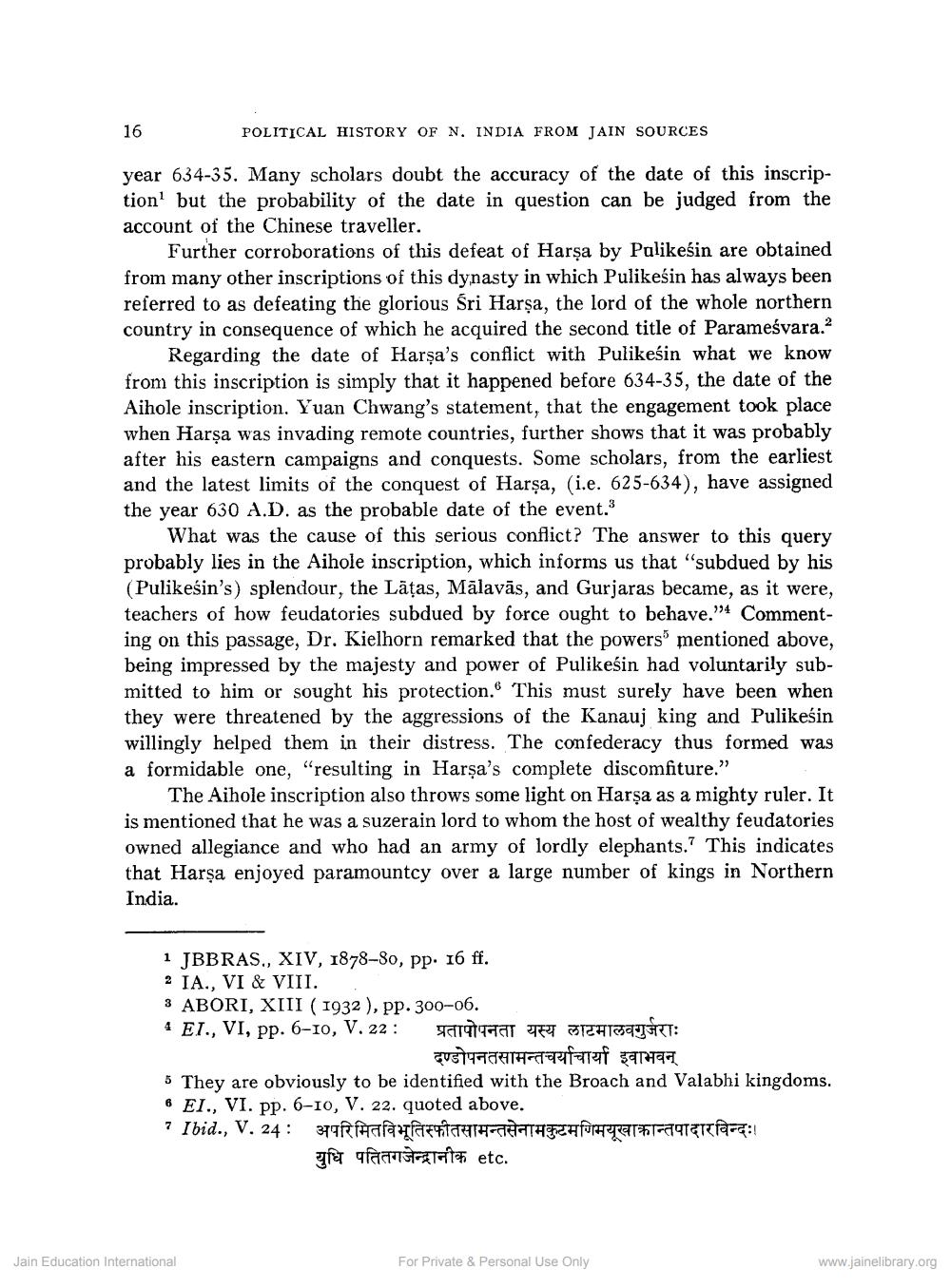________________
16
POLITICAL HISTORY OF N. INDIA FROM JAIN SOURCES
year 634-35. Many scholars doubt the accuracy of the date of this inscription' but the probability of the date in question can be judged from the account of the Chinese traveller.
Further corroborations of this defeat of Harsa by Palikeśin are obtained from many other inscriptions of this dynasty in which Pulikesin has always been referred to as defeating the glorious Sri Harsa, the lord of the whole northern country in consequence of which he acquired the second title of Parameśvara.?
Regarding the date of Harsa's conflict with Pulikesin what we know from this inscription is simply that it happened before 634-35, the date of the Aihole inscription. Yuan Chwang's statement, that the engagement took place when Harsa was invading remote countries, further shows that it was probably after his eastern campaigns and conquests. Some scholars, from the earliest and the latest limits of the conquest of Harsa, i.e. 625-634), have assigned the year 630 A.D. as the probable date of the event.
What was the cause of this serious conflict? The answer to this query probably lies in the Aihole inscription, which informs us that "subdued by his (Pulikesin's) splendour, the Lāțas, Mālavās, and Gurjaras became, as it were, teachers of how feudatories subdued by force ought to behave."4 Commenting on this passage, Dr. Kielhorn remarked that the powers mentioned above, being impressed by the majesty and power of Pulikesin had voluntarily submitted to him or sought his protection. This must surely have been when they were threatened by the aggressions of the Kanauj king and Pulikesin willingly helped them in their distress. The confederacy thus formed was a formidable one, "resulting in Harşa's complete discomfiture."
The Aihole inscription also throws some light on Harsa as a mighty ruler. It is mentioned that he was a suzerain lord to whom the host of wealthy feudatories owned allegiance and who had an army of lordly elephants. This indicates that Harsa enjoyed paramountcy over a large number of kings in Northern India.
1 JBBRAS., XIV, 1878-80, pp. 16 ff. 2 IA., VI & VIII. 3 ABORI, XIII (1932), pp. 300-06. 4 El., VI, pp. 6-10, V.22: A TTAT FFI GITATSAJFT:
दण्डोपनतसामन्तचर्याचार्या इवाभवन् 5 They are obviously to be identified with the Broach and Valabhi kingdoms. 6 El., VI. pp. 6-10, V. 22. quoted above. ? Ibid., V. 24 : 377fafa Has TETHETH foretariaatt !
युधि पतितगजेन्द्रानीक etc.
Jain Education International
For Private & Personal Use Only
www.jainelibrary.org




